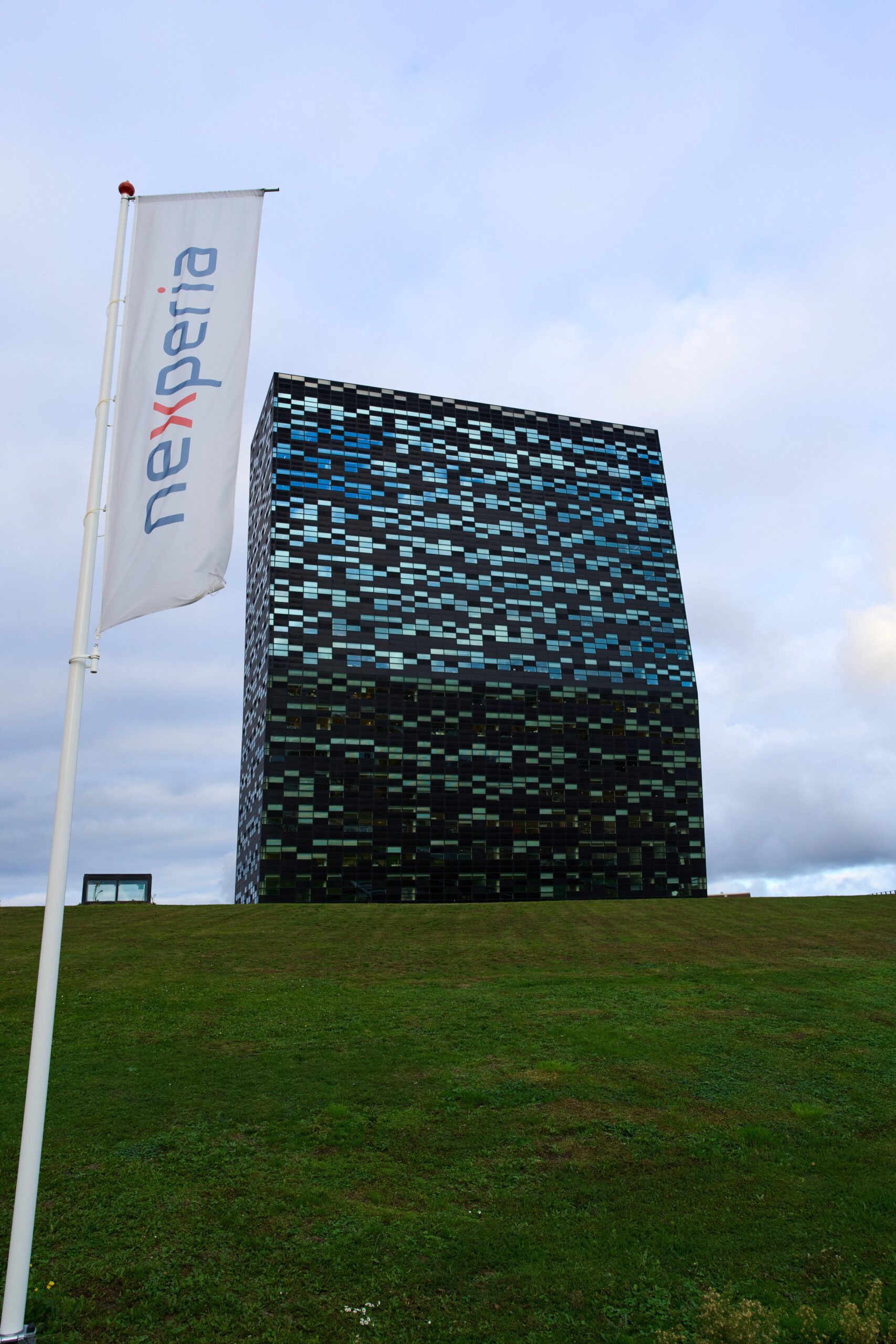Tech
Paramount+ Coupon Codes and Deals: Free Trial, Student Deals, and Military Discounts for November 2025

The most talked-about TV show in the country right now, South Park, is on Paramount+. Don’t you want to know what got Trump in such a tizzy?
Stream the much buzzed-about South Park, fan-favorite Yellowstone, original series MobLand, and rebooted crime drama Dexter & Dexter on Paramount+. The streaming network has a bingeable TV series for almost everyone. And whether you want to remember Lindsay Lohan’s old face in the classic Mean Girls flick, or wonder just how many more sequels Tom Cruise has left in him with Top Gun: Maverick, there’s a bevy of films to stream, too.
If you’re like me and have at least half a dozen streaming services, our Paramount+ coupon codes can help you save so you can watch the content you want without having to get rid of one of your other beloved content platforms. (I love pretending the world isn’t full of suffering around me and instead focus on Sylvester Stallone’s ever-changing Play-Doh face in Tulsa King.)
Try Paramount+ Free With a One-Week Trial
If you’re unsure if you’ll actually want to commit to Paramount+, or if there’s a sports event like the Super Bowl or March Madness games and you only need to access the content for a little while, Paramount+’s free trial is a great option. The trial lasts one week, is for new subscribers only, and can’t be paired with other offers.
There are tiered plans, including Essential, which allows for 3 devices, select Showtime series, NFL games, and can be streamed on up to 3 devices at once, but has ads; and Premium, which includes all that except there are no ads, downloadable content, CBS live, and all of Showtime content.
Save on a Paramount+ Subscription With Student and Military Discounts
If you’re a student now (or have your student ID lying around somewhere), you can get a Paramount+ plan at only $4 a month. All you have to do is verify your student status and you’ll get 50% off any plan of your choosing for the first year. Or if you’re a military member, Paramount+ gives 50% off any subscription for life.
Stream Live Sports and Events on Paramount+
For better or worse, I’m a Chiefs fan (cue the booing). I usually get a Paramount+ plan during the football season to keep up with my favorite beefy, TBI-ridden men. You can stream all of the NFL coverage you want all season long, plus, 24/7 live channels are now streaming on Paramount+, so you’ll never need to give your brain the time to process the horrors.
Watch Paramount+ Originals and Fan Favorites
TThere’s truly something for everyone in the family, with movies, kids’ shows, and Paramount+ originals included in every plan. If you’re feeling spooky, I’d recommend Dexter: Resurrection, or Yellowjackets, but if you’re looking for something more family-friendly, there’s super popular cartoons like Rango or Sonic the Hedgehog to choose from.
Looking for specific recommendations? I’ve got you. There are tons of great new releases coming to Paramount+ this November, including Landman season 2, new Paramount+ original comedy series Crutch starring Tracy Morgan, and new episodes of (my favorite) newly premiered Ink Master Season 17. There are also tons of new movies, including The Cut, a boxing drama starring Orlando Bloom, dark comedy Shell, and true-crime tale My Nightmare Stalker: The Eva LaRue Story. Plus, Paramount+ will be playing the important NFL holiday games, like the Chiefs-Cowboys Thanksgiving Day game.
Check out the wide breadth of TV and movie content to choose from on Paramount+ (and use the Paramount+ promo codes above to save on whatever plan you decide).
Tech
The Hidden Math of Ocean Waves

In 2011, Deconinck and Oliveras simulated different disturbances with higher and higher frequencies and watched what happened to the Stokes waves. As they expected, for disturbances above a certain frequency, the waves persevered.
But as the pair continued to dial up the frequency, they suddenly began to see destruction again. At first, Oliveras worried that there was a bug in the computer program. “Part of me was like, this can’t be right,” she said. “But the more I dug, the more it persisted.”
In fact, as the frequency of the disturbance increased, an alternating pattern emerged. First there was an interval of frequencies where the waves became unstable. This was followed by an interval of stability, which was followed by yet another interval of instability, and so on.
Deconinck and Oliveras published their finding as a counterintuitive conjecture: that this archipelago of instabilities stretches off to infinity. They called all the unstable intervals “isole”—the Italian word for “islands.”
It was strange. The pair had no explanation for why instabilities would appear again, let alone infinitely many times. They at least wanted a proof that their startling observation was correct.
Photograph: Courtesy of Katie Oliveras
For years, no one could make any progress. Then, at the 2019 workshop, Deconinck approached Maspero and his team. He knew they had a lot of experience studying the math of wavelike phenomena in quantum physics. Perhaps they could figure out a way to prove that these striking patterns arise from the Euler equations.
The Italian group got to work immediately. They started with the lowest set of frequencies that seemed to cause waves to die. First, they applied techniques from physics to represent each of these low-frequency instabilities as arrays, or matrices, of 16 numbers. These numbers encoded how the instability would grow and distort the Stokes waves over time. The mathematicians realized that if one of the numbers in the matrix was always zero, the instability would not grow, and the waves would live on. If the number was positive, the instability would grow and eventually destroy the waves.
To show that this number was positive for the first batch of instabilities, the mathematicians had to compute a gigantic sum. It took 45 pages and nearly a year of work to solve it. Once they’d done so, they turned their attention to the infinitely many intervals of higher-frequency wave-killing disturbances—the isole.
First, they figured out a general formula—another complicated sum—that would give them the number they needed for each isola. Then they used a computer program to solve the formula for the first 21 isole. (After that, the calculations got too complicated for the computer to handle.) The numbers were all positive, as expected—and they also seemed to follow a simple pattern that implied they would be positive for all the other isole as well.
Tech
A crisis at chipmaker Nexperia sent automakers scrambling. Here’s what to know

A battle for control of a little-known chipmaker has threatened global auto production by choking off the semiconductor supply chain, though there are signs the crisis is inching toward a resolution.
The power struggle over Nexperia, a Chinese-owned Dutch semiconductor maker, highlights how technology supply chain vulnerabilities are squeezing auto makers, most notably forcing Honda to halt production at a Mexican factory making its popular HR-V crossover for North American markets. It also exposes how Europe is caught in the middle of the wider geopolitical showdown between Washington and Beijing.
Here’s a look at the dispute:
A surprise move
The turmoil erupted into public view in mid-October, when the Dutch government announced it had invoked a rarely used World War II-era law to take effective control of Nexperia weeks earlier.
The Dutch ministry of economic affairs said it took action because of national security concerns. Officials said they intervened because of “serious governance shortcomings” at Nexperia, asserting control to prevent the loss of crucial tech know-how that could threaten Europe’s economic security.
Nexperia’s Chinese owner Wingtech Technology, a partially state-owned company, is at the heart of the dispute. Amid the boardroom battle, a Dutch court granted the ministry’s request to oust Nexperia’s Chinese CEO Zhang Xuezheng. American officials told the Dutch government he would have to be replaced to avoid trade restrictions, according to a court filing.
What is Nexperia?
Nexperia makes simple semiconductors such as switches and logic chips. The auto industry—one of Nexperia’s biggest markets—uses its chips for numerous functions, such as adaptive LED headlight controllers, electric vehicle battery management systems and anti-lock brakes.
Headquartered in the Dutch city of Nijmegen, Nexperia was spun off from Philips Semiconductors two decades ago. It was eventually purchased by China’s Wingtech Technology in 2018 for $3.6 billion.
Nexperia has wafer fabrication plants in Britain and Germany. It operates an assembly and testing center in China’s southern manufacturing heartland of Guangdong—which accounts for around 70% of its end-product capacity—and similar centers in the Philippines and Malaysia.

Geopolitics
The dispute is part of the broader struggle between the U.S. and China over tech supremacy, which has left Europe caught in the middle.
It stems from Washington’s decision late last year to place Wingtech on its “entity list,” which subjects companies to export controls because of national security risks. In late September, the U.S. expanded that list to Wingtech’s subsidiaries, including Nexperia, pressuring allies to follow suit.
After the Dutch government asserted control of Nexperia, Beijing responded soon after, blocking the export of Nexperia chips from its assembly plant in the Chinese city of Dongguan. It blamed the Netherlands for “turmoil and chaos” in the chip supply chain.
There were signs of hope following last month’s high-profile meeting between U.S. President Donald Trump and Chinese leader Xi Jinping, when the White House said Beijing would ease the export ban as part of a U.S.-China trade truce.
Despite Beijing also confirming exports would be allowed to resume, Nexperia’s Chinese unit said headquarters suspended shipments of wafers used to make chips to its Chinese factory, potentially crimping its ability to deliver finished products.
Nexperia’s head office hit back in a statement Wednesday, saying the Chinese unit refused to pay for the wafers and accused it of “ignoring the lawful instructions” from its global management team. The company said it can’t guarantee the quality of any chips delivered from its China plant since Oct. 13.
Auto disruption
Modern automobiles rely on so-called discrete chips made by companies like Nexperia, which, unlike more advanced microprocessors, perform a single function. Leaders at big carmakers spelled out their worries in the latest round of earnings calls, saying that finding a replacement for Nexperia at scale in the short term will be difficult.
“While Nexperia makes up only about 5% of the automotive silicon discrete market in term of revenue, its share is much higher in terms of discrete chip volume,” S&P Global Mobility analysts wrote in a recent note.
Nexperia’s parts are widely used across vehicle systems—often dozens to hundreds per vehicle—and carmakers in North America, Japan and South Korea are at risk, they added.

“It’s an industrywide issue. A quick breakthrough is really necessary to avoid fourth quarter production losses for the entire industry,” Ford CEO Jim Farley said.
General Motors CEO Mary Barra warned that production could be hit. The company has “teams working around the clock with our supply chain partners to minimize possible disruptions,” she said.
Nissan CEO Ivan Espinosa told CNBC that the company is setting aside a 25 billion yen ($163 million) provision for supply risks, in part to “absorb” the impact from the Nexperia crisis on production.
Mercedes-Benz is “scurrying around the world to look for alternatives,” CEO Ola Kallenius said. The European Automobile Manufacturers’ Association said members including BMW, Renault, Volkswagen and Volvo have been forced to use their reserve stockpiles of chips and warned of assembly line stoppages if they run out.
Resolution
The European Union’s trade commissioner, Maros Sefcovic, on Saturday noted “encouraging progress,” writing on X that China’s Commerce Ministry had confirmed “further simplification” of export procedures for Nexperia chips to the EU and global customers.
In Beijing, the Commerce Ministry also said Saturday that it agreed to a Dutch request to send representatives to China for “consultations.”
But it noted that the Netherlands had not taken any concrete actions yet to restore the global semiconductor supply chain since the Dutch government said days earlier it would take “appropriate steps on our part where necessary.”
Economics Affairs Minister Vincent Karremans had said in that statement that “the Netherlands trusts that the supply of chips from China to Europe and the rest of the world will reach Nexperia’s customers over the coming days.”
Honda has received word that Nexperia’s shipments from China have resumed, Executive Vice President Noriya Kaihara told reporters Friday. He said the Japanese automaker expects to resume production during the week of Nov. 21 at its plant in Celaya, Mexico, which can make up to 200,000 vehicles a year.
© 2025 The Associated Press. All rights reserved. This material may not be published, broadcast, rewritten or redistributed without permission.
Citation:
A crisis at chipmaker Nexperia sent automakers scrambling. Here’s what to know (2025, November 8)
retrieved 8 November 2025
from https://techxplore.com/news/2025-11-crisis-chipmaker-nexperia-automakers-scrambling.html
This document is subject to copyright. Apart from any fair dealing for the purpose of private study or research, no
part may be reproduced without the written permission. The content is provided for information purposes only.
Tech
A Gene Editing Therapy Cut Cholesterol Levels by Half

In a step toward the wider use of gene editing, a treatment that uses Crispr successfully slashed high cholesterol levels in a small number of people.
In a trial conducted by Swiss biotech company Crispr Therapeutics, 15 participants received a one-time infusion meant to switch off a gene in the liver called ANGPTL3. Though rare, some people are born with a mutation in this gene that protects against heart disease with no apparent adverse consequences.
The highest dose tested in the trial reduced both “bad” LDL cholesterol and triglycerides by an average of 50 percent within two weeks after treatment. The effects lasted at least 60 days, the length of the trial. The results were presented today at the American Heart Association’s annual meeting and published in The New England Journal of Medicine.
The Nobel Prize–winning Crispr technology has mostly been used to address rare diseases, but these latest findings, while early, add to the evidence that the DNA-editing tool could be used to treat common conditions as well.
“This will probably be one of the biggest moments in the arc of Crispr’s development in medicine,” Samarth Kulkarni, CEO of Crispr Therapeutics, tells WIRED. The company is behind the only approved gene-editing treatment on the market, Casgevy, which treats sickle cell disease and beta thalassemia.
The American Heart Association estimates that about a quarter of adults in the US have elevated LDL levels. A similar number have high triglycerides. LDL cholesterol is the waxy substance in the blood that can clog and harden arteries over time. Triglycerides, meanwhile, are the most common type of fat found in the body. High levels of both raise the risk of heart attack and stroke.
The Phase I trial was conducted in the UK, Australia, and New Zealand between June 2024 and August 2025. Participants were between the ages of 31 and 68 and had uncontrolled levels of LDL cholesterol and triglycerides. The trial tested five different doses of the Crispr infusion, which took about two and a half hours on average to administer.
“These are very sick people,” says Steven Nissen, senior author and chief academic officer of the Heart, Vascular and Thoracic Institute at Cleveland Clinic, which independently confirmed the trial’s results. “The tragedy of this disease is not just that people die young, but some of them will have a heart attack, and their lives are never the same again. They don’t get back to work, they develop heart failure.”
One trial participant, a 51-year-old man, died six months after receiving the lowest dose of the treatment, which was not associated with a lowering of cholesterol and triglycerides. The death was related to his existing heart disease, not the experimental Crispr treatment. The man had a rare, inherited genetic form of high cholesterol and previously had several procedures to improve blood flow to his heart.
-

 Tech1 week ago
Tech1 week agoGear News of the Week: Withings Launches Its Pee Scanner, and Samsung Shows Off a Trifold Phone
-

 Tech1 week ago
Tech1 week agoDisney content has gone dark on YouTube TV. Here’s what customers should know
-

 Business1 week ago
Business1 week agoAndy Jassy Reveals Real Reason Behind Amazon 14,000 Job Cuts — And It’s Not AI
-
Sports1 week ago
Ravens are back in the hunt after two straight wins and Lamar Jackson’s return
-

 Tech1 week ago
Tech1 week agoKeep Tabs on Your Pets and Kids With the Best Indoor Security Cameras
-

 Sports1 week ago
Sports1 week agoTudor’s Juve exit means McKennie must prove himself all over again
-

 Fashion1 week ago
Fashion1 week agoIndia’s Raymond Lifestyle Ltd’s Q2 FY26 revenue rises 8% to $211.5 mn
-

 Politics1 week ago
Politics1 week agoPolitical violence kills almost 300 since Hasina’s fall: rights group


















